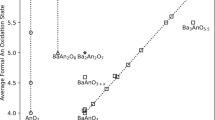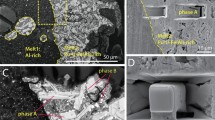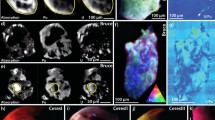Abstract
THE presence of a dicarbide in the Pu–C system was originally reported by Drummond1. Mulford and Ellinger2 showed that the compound was unstable below ∼ 1,750° C, and that it decomposed to form PuC2 and carbon. These workers were unable to index the X-ray diffraction pattern obtained at room temperature from alloys quenched from the molten state. Chackraburtty and Jayadevan3 indexed diffraction lines from a sample of PuO2 and carbon quenched from the reaction temperature of 2,200° C as arising from a body centred tetragonal phase isomorphous with UC2 and deduced that this was also the high temperature structure. Tetragonal structures have also been found in quenched materials by J. A. Leary and J. G. Reavis (private communication), who also reported that the formation temperature of PuC2 was 1,650° C. As part of a study of the phase relationships in the UC2–PuC2 system it was necessary to determine the high temperature structure of PuC2. The apparatus used was a high temperature diffractometer4 attached to a conventional Philips X-ray goniometer using Cu Ka radiation.
This is a preview of subscription content, access via your institution
Access options
Subscribe to this journal
Receive 51 print issues and online access
$199.00 per year
only $3.90 per issue
Buy this article
- Purchase on SpringerLink
- Instant access to full article PDF
Prices may be subject to local taxes which are calculated during checkout
Similar content being viewed by others
References
Drummond, J. L., McDonald, B. J., Ockenden, H. M., and Welsh, G. A., J. Chem. Soc., 4785 (1957).
Mulford, R. N. R., Ellinger, F. H., Hendrix, G. S., and Albrecht, E. D., Plutonium 1960, 310 (Cleaver-Hume Press, London, 1960).
Chackraburtty, D. M., and Jayadevan, N. C., Acta Cryst., 18, 811 (1965).
Harper, E. A., AERE-R 5695.
Author information
Authors and Affiliations
Rights and permissions
About this article
Cite this article
HARPER, E., HEDGER, H. & DALTON, J. High Temperature Structure of Plutonium Dicarbide. Nature 219, 151 (1968). https://doi.org/10.1038/219151a0
Received:
Published:
Issue date:
DOI: https://doi.org/10.1038/219151a0



